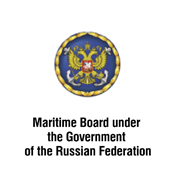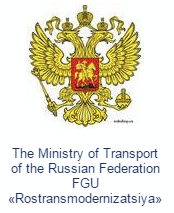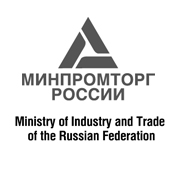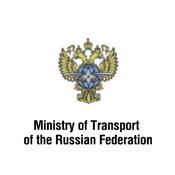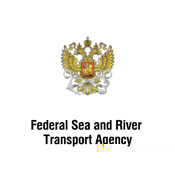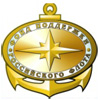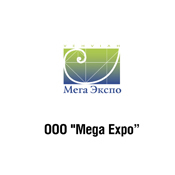May 07, 2015
Greetings from the Ministry of Industry and Trade of the Russian Federation
January 28, 2015
The Forum organizers received the greeting from Gutenev V.V., the First Deputy Chairman of the Russian Engineering Union.
January 15, 2015
The Government of the Russian Federation addressed a welcome letter to the V International Forum Marine Industry of Russia.
More on communication equipment
Ship communication equipment comprises facilities and equipment providing two-way communication both aboard and between the ship and the outer world (shore, port, other ships and carrier vehicles, etc). Communication equipment serves to receive and transmit alarm, emergency signals, navigation warnings, meteorological and hydrological forecasts, medical information and service and private messages.
Such simplest devices as megaphone, semaphore, searchlight, as well as modern global marine and safety system (GMDSS), satellite communication systems and command broadcast apparatus can be used as the ship communication equipment.
Global Marine and Safety System (GMDSS)
GMDSS based on International Convention for the safety of life at sea (SOLAS) was brought into service ten years ago. The system ensured consolidate marine ships, communication satellites and coast stations. Earlier the signal of the injured vessel was received by ships within a radius of less 200 marine miles, and today, with GMDSS, emergency report can be receive in any point of the World Ocean. Signaling simplicity is another advantage of GMDSS. To do so, you need not radio operator skills, just press one of the buttons located not only in the radio cabin but at several points of the ship.
GMDSS comprises equipment, infrastructure as well as code of engineering controls and rules. GMDSS requirement cover international route passenger and cargo ships with deadweight over 300 tons, and by decision of the country of registration, non-conventional vessels (coasters, fishing ships, etc.).
Main Components of GMDSS:
- INMARSAT satellite network including radio-transmitting sets;
- COSPAS-SARSAT satellite network including emergency beacons;
- Digital Selective Call (DCS) ground communication systems;
- NAVTEX system;
- SART emergency radar transponder.
INMARSAT is the basic system of earth coverage satellite communication. It comprises geostationary satellites, coast earth stations and user stations. For signal transmission, special onboard radio transmitters (terminals) are used. Depending on the model, terminals can be used for connection with mobile telephones, SMS and MMS sending and for internet access (including broadband access).
COSPAS-SARSAT is designed for determination of geographical coordinates and allegiance of ships in distress. It comprises several low-earth-orbit and geostationary satellites, network of data receiving and processing stations, network of coordinating centers and emergency beacons. The last are 406 and 025 MHz onboard radio transmitters. При запуске аварийный буй передает сигналы бедствия автоматически.
Digital Selective Call (DCS) ground communication systems use transmitters initially calling onboard and coastal stations with the purpose of reporting emergency situation, confirming and broadcasting the call, informing message transmission, and communicating via active channel. It is necessary to remember that DSC is used just for the initial call. The subsequent communication is maintained via radiophone, telex or other available communication link. DSC operates in MF, HF and USB bands.
NAVTEX is another international automated reporting system. It is used by navigators in coastal areas for transmission of navigation warnings and meteorological information printed in English. It operates in on a MW frequency of 490 and 518 KHz (in the area of Suez Canal 4209.5 KHz is also used). This system requires installation of onboard receivers.
SART emergency radar transponder helps determine ship location via signal transmission to radiolocation stations. This manual device operates at 9 GHz, and covers territory within a radius of 8 marine miles. In accordance with SOLAS requirements, at least one radar beacon transponder is to be installed at ships with gross capacity up to 500 tons, and at least 2 transponders, if gross capacity is over 500 tons.
Finally, communication system diagnostic devices (testers) are the separate range of GMDSS products.
Command Broadcast Apparatus (CBA)
GMDSS is designed for providing communication between the vessel and the outer world. Public address or command translation systems are used for onboard annunciation. Via these systems, the crew and passengers can be informed on emergency and critical situations as well as informational messages can be transmitted.
Command broadcast apparatus is to meet SOLAS command broadcast facility requirements, and have enhanced moistness, corrosion and strain tolerance. It is desirable to integrate CBA with other onboard security systems (fire detection, alarm signal, blast signal management systems, etc).
Generally, CBA comprises several remote control panels, posts of two-way public address system, microphones, loud-speakers, and sound reproducing systems.
Satellite Communication Systems
In addition to GMDSS, personal satellite systems providing two-way connection in any place of the world (Iridium, Globalstar, Turaya) were designed and are successfully operated.
These systems use their own low-earth-orbit satellites which ensures reducing delay of the sent or received signal, and significantly lower satellite phone weight and dimensions.
Personal satellite system telephones are manufactured by such well known companies as Motorola, Ericsson, Telit and Qualcomm. A number of supplying companies offers telephone leasing.
Situation in Russia
In Russia, Morsvyazsputnik FGUP is a coast earth station operator of INMARSAT satellite network, telecommunication service accounting authority, and certification center for GMDSS communication-navigation equipment.
Recently, creation of NAVTEX coast stations even in the regions with far from heavy navigation have been the priority activity in Russia. These regions (Far East, Arctic) are the zones of ship coursing, development of drilling plates, i.e. related with risks and emergency situations to a greater or lesser degree. So, they are to meet SOLAS requirements.
The creation of legal and normative-technical framework is another Russian GMDSS tendency. Today, many documents of existing framework are temporary and do not consider latest modifications of international requirements.
Successful creation and development of GMDSS training centers for specialist professional training and skills maintaining is a positive point. Over 15 000 people complete their training in domestic centers.
In the area of manufacture of GMDSS equipment and facilities (), domestic designers prepared and produced a number of such successful models as ARB-406 emergency beacon, Musson-502 and Duym-C beacon tracking equipment.
© Marine Industry of Russia, 2009-2010. All rights reserved.
By: “Ideological buiseness-projects”
Design by Valentina Ivanova.
